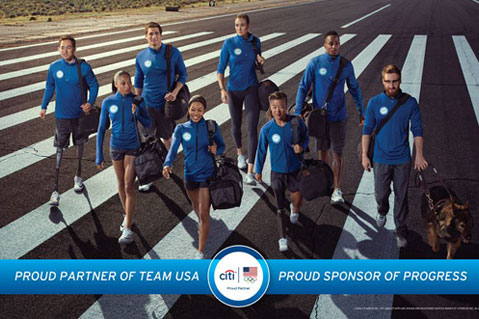August 04, 2016
How Staples Creates Olympic Branded Merchandise
In the Olympics, the signature event in Track & Field is the 100-meter sprint. Staples Promotional Products (asi/120601) has something similar: the 100-day dash, the crunch time that sponsors get serious about securing their Olympic-branded merchandise for the games. “To use an Olympic analogy,” Anne McKeough, vice president of global sales for Staples Promotional Products, said in an interview with Counselor, “it’s when that pistol goes off and the sponsor activation accelerates.”

That sprint is just the final push in a four-year marathon that encompasses Staples’ preparation for each Olympics. And it’s a race the company has run many times before – Staples has provided sponsorship merchandise for both the Summer and Winter Games since 1988.
Staples doesn’t provide the gear and uniforms the athletes wear on the field and in the opening and closing ceremonies. (Nike and Ralph Lauren handle that part.) But what it does provide, through a licensing agreement with the United States Olympic Committee (USOC), is millions of branded items that Team USA sponsors give away and use before, during and after the games. (In 2009 the company also added the license for Team USA merchandise that is sold in Olympic stores in Colorado Springs, CO and Chula Vista, CA, where the USOC has training centers.) For this year’s Summer Olympics in Rio de Janeiro, Staples estimates it will supply roughly 20 million items to its clients.
Like Staples, BDA (asi/137616) also holds a premiums sponsorship license, which last year the company extended through the 2020 Summer Games. Team USA’s 38 sponsors have the choice of working with either or both companies. Staples partners with over two dozen sponsors, including major corporations like Visa, Samsung and Hershey (many of whom work with Staples in other B-to-B capacities).
The sponsors are no stranger to the marketing game, and the distributor seeks to match their expectations with merchandise that has a retail feel for its myriad of uses: employee engagement, athlete interviews, outfitting hospitality teams, giveaways and more. And with the crush of interest so close to the games, Staples streamlines the process by creating an official collection of products and then making sure each sponsor offers something unique. “If they’re going to be standing right next to each other with the same item,” said Donna Armstrong, the company’s director for sponsorship activation who closely manages the Olympic relationship, “it doesn’t make their brand feel special. Our goal is to provide individual looks for each individual sponsor.”
The products run the gamut from notebooks to wristbands to apparel and much more, including unexpected items like a custom surfboard for Visa. Some products understandably take their cue from the site of the games (this year’s Brazil-inspired touches include colorful beach bags and sun hats), but the vast majority of the products follow the patriotic color scheme of Team USA. “We’re really here to support Team USA, and the designs are driven from a red, white and blue theme that strongly represents them,” Armstrong told Counselor. And that support is far more than simple Olympic spirit; since the U.S. is the only country that does not subsidize its athletes, commercial sponsors play an essential role in funding America’s Olympic stars. The athletes, in turn, will wear the branded garments for sponsor events, off-field interviews and much more.
The victory for Staples is that its merchandise doesn’t feel out of place with the rest of the Team USA items. The USOC’s current management team, with executives who had worked previously for the NFL, is much more stringent about brand protection and far-reaching in its vision. Armstrong, who has been involved with the Olympics since 1999, said the team under USOC Chief Marketing Officer Lisa Baird “has created a consistent theme that you can see at retail, on sponsor merchandise and all the way to the athletes on the podium.” These days, the USOC shares its style guide very early on, and the distributor and the organization are in constant communication. “There’s more cohesive development,” said McKeough.
Communication is necessary because the USOC must approve every single branded item. It’s one of many unique licensing standards in the Olympics, such as the fact that sponsor logos cannot be bigger than the Olympic rings. And while Team USA’s uniforms are manufactured in America (after a blaze of controversy four years ago), no such mandate applies to the sponsors’ items.
While the USOC has adopted an integrated brand approach, it still carves out a significant space for promotional items, unlike the NFL and other sports leagues. “Olympics sponsors will have their entire corporate staff and VIPs wearing co-branded gear,” Peter Zeytoonjian, the USOC’s managing director for consumer products, told Bloomberg in an article last month. “Whereas for NFL partners, it’s almost always consumer-facing products.”
Staples’ team arrived in Rio days before the opening ceremony, acting as a support system for sponsors and handling last-minute requests. While much of the heavy lifting is done (and the Staples Promotional Products team may even be able to catch a few events), there is typically a post-Olympic boom of tours for athletes and teams that fare well in the games. Later in the fall, just as the athletes do, the preparations will begin for the next Olympics.

Product Hub
Find the latest in quality products, must-know trends and fresh ideas for upcoming end-buyer campaigns.
